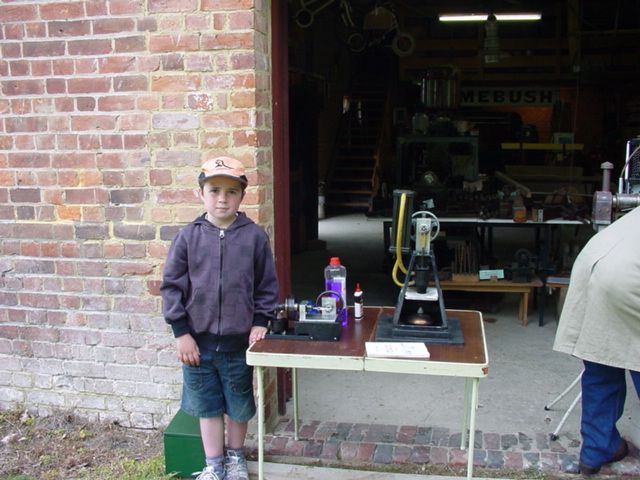With regard to piston/displacer engines, nothing demonstrates that these small engines operate above and below atmospheric than when you remove the flywheel, give the shaft a flick and it runs at amazing speed – all be it with very little torque. I did this with my grandson’s engine just to see what would happen as you did with yours, Ian. But this is not the case with high tech engines that are sealed from the atmosphere; they must operate on variations of positive pressure.
I am keen to investigate the dead space issue because, if you look at the Robinson engine with its huge dead space between the power cylinder and the working cylinder then couple that with the relatively empty space in the moving regenerator it should not work according to common wisdom, but it does and quite successfully by all accounts. In the case of this engine maybe the displacer is less a regenerator and more a heat transfer device – there is a difference here. What I am thinking is that when the displacer is in the top of its cylinder the regenerative material absorbs heat and then on descending,dumps that heat into the incoming cool air which, once heated does work by expanding and therefore cooling while pushing on the cool air in the working cylinder. Maybe there are three layers of working air:
That which is hot all the time,
A middle third that absorbs and dumps heat
And the third that is just a cool medium that pushes the piston out.
So, according to this logic, it is only the middle third that is effected by temperature changes. I suspect the same is true for standard displacer engines.
Looking at the very successful Phillips “Model ten engine”, it has a seal at the bottom of the displacer that forces the air out and down the external heat exchangers and regenerator. When you think about it, the air is heated twice: incoming and outgoing which is a waste of energy, whereas if you consider the Rider with the air transfer between the working piston extension and the piston itself, it is only heated once. Also in a Beta or Gamma design there is only about a third of the piston travel that is felt by the expanded air but in the rider, both pistons feel that pressure and so the ratio is doubled; so it is not surprising that a Rider is more powerful, as demonstrated by Andy Ross with his 35 cc engine that developed 44 watts unpressurised according to legend. Most usual displacer/piston engines can manage just 3 to 5 watts of the same capacity. I think we have a lot to learn about these incredibles machines, many secrets have yet to reveal themselves.
Edited By Mark Smith 3 on 23/11/2009 10:29:04
SillyOldDuffer.









